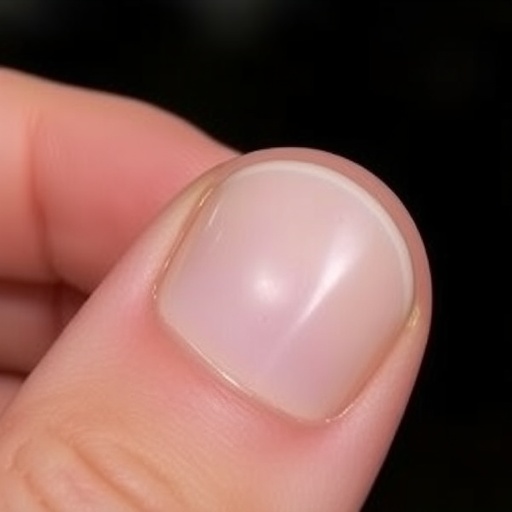In the ever-evolving landscape of forensic science, the pursuit of innovative and reliable identification techniques remains paramount. Among the myriad of biometric markers, dental evidence has long held a pivotal role due to the resilience and uniqueness of teeth. Recently, a groundbreaking exploration into enamel rod-end patterns, as detailed in Acharya’s latest publication, offers promising insights that may revolutionize practical forensic dental identification. This focus on microscopic rod-end configurations etched into the enamel surface presents a novel frontier, potentially enhancing the precision and robustness of human identification in forensic casework.
Enamel, the hardest and most enduring biomineralized tissue in the human body, owes its remarkable durability to a complex microstructural arrangement of hydroxyapatite crystals. These crystals form enamel rods—elongated, tightly packed microscopic units extending from the dentinoenamel junction to the tooth surface. The terminal ends of these rods manifest as distinct patterns, often referred to as enamel rod-end patterns or “tooth prints,” which vary across individuals and teeth. Such intricate microtextures offer a fingerprint-like uniqueness that researchers suggest can be pivotal in forensic analysis.
The study strategically evaluates whether the rod-end pattern variability, as revealed through advanced microscopic techniques, can be systematically utilized for dental identification purposes. Traditional dental identification relies heavily on morphological characteristics, restorations, and radiographic comparisons, yet these can be compromised due to trauma, decomposition, or absence of ante-mortem records. Enamel rod-end patterns have the potential to fill these gaps, providing an additional, perhaps more resilient, biometric layer that complements existing methods.
Microscopic visualization of these patterns has been enhanced through scanning electron microscopy (SEM) and atomic force microscopy (AFM), which afford unprecedented resolution to discern the minutiae of enamel rods. The morphometric analysis conducted in the study demonstrates significant inter- and intra-individual variability, suggesting that enamel rod-end patterns could serve as distinguishable traits in forensic databases. This variability persists despite the homogenizing influences of age, dietary habits, or environmental factors, further supporting their reliability.
Beyond mere pattern recognition, the study dives into the mechanisms underlying enamel rod formation, highlighting the biological factors during amelogenesis that shape these microstructural end patterns. The enamel matrix proteins and the enamel-forming cells (ameloblasts) orchestrate rod orientation and density, potentially modulated by genetic and epigenetic factors. This biological foundation underscores the plausibility of these patterns behaving as unique identifiers analogously to fingerprints or DNA.
Furthermore, Acharya addresses the methodological challenges in capturing and cataloging enamel rod-end patterns for forensic application. Standardized protocols are imperative to ensure reproducibility and accuracy across laboratories. Factors such as sample preparation, imaging parameters, and analytical algorithms must be meticulously optimized. The study suggests that integrating machine learning techniques could significantly enhance pattern recognition, enabling automated classification with high throughput and minimal human error.
The forensic relevance of enamel rod-end patterns is accentuated by their survival capability under extreme conditions. Unlike soft tissues or certain biomolecules prone to rapid degradation, enamel microstructures are known to withstand fire exposure, prolonged burial, and various chemical insults. This resilience not only broadens the applicability in disaster victim identification but also in scenarios involving skeletal remains where dentition is often the only preserved biological material.
One practical application posited involves the creation of a comprehensive reference database that catalogues enamel rod-end patterns from diverse populations and age groups. Such a repository would facilitate rapid cross-referencing during forensic investigations, enhancing the speed and reliability of identification. Additionally, this database might illuminate population-specific pattern trends, contributing to anthropological and evolutionary studies.
While the promise of enamel rod-end pattern analysis is considerable, the study also prudently highlights limitations and future research directions. Variability in sampling techniques and the infeasibility of obtaining ante-mortem enamel images for numerous cases pose significant barriers. Ethical considerations regarding the handling of dental tissues and privacy concerns linked to biometric data storage also warrant rigorous scrutiny.
Notably, Acharya’s findings prompt interdisciplinary collaboration, urging forensic odontologists, material scientists, bioinformaticians, and legal experts to collectively refine and validate the technique. Such partnership is critical to transition the research from laboratory experimentation to courtroom acceptance, where standards of evidence and expert testimony must be impeccably adhered to.
The broader scientific community is likely to find this development impactful, given the pressing need for novel forensic tools that reconcile accuracy with practicality. The integration of enamel rod-end pattern analysis could substantially augment current identification workflows, reinforcing the multidisciplinary fabric of forensic inquiry.
This innovative approach exemplifies how microscopic biological signatures, previously overlooked or inaccessible, can now be harnessed effectively through technological advancements. The prospect of a “dental fingerprint” rooted in enamel microstructure not only expands the forensic toolkit but also sparks contemplations on the intricate individuality embodied within human biology.
In conclusion, Acharya’s 2025 study represents a significant step forward in forensic odontology, offering compelling evidence that enamel rod-end patterns hold tangible value for practical identification. If systematically harnessed, these patterns could become a cornerstone of biometric verification, particularly in challenging forensic scenarios. Continued research, validation, and standardization efforts are essential to realizing their full potential and embedding this innovation within forensic practice worldwide.
Subject of Research: Forensic dental identification using enamel rod-end patterns
Article Title: Can studies and published findings on enamel rod-end patterns contribute to practical forensic dental identification?
Article References:
Acharya, A.B. Can studies and published findings on enamel rod-end patterns contribute to practical forensic dental identification?.
Int J Legal Med (2025). https://doi.org/10.1007/s00414-025-03534-x
Image Credits: AI Generated




